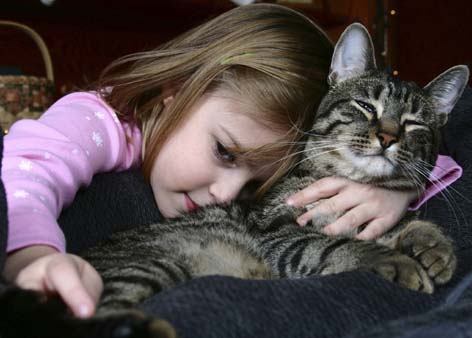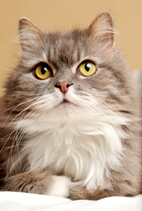Inhalant Allergies in Cats
Inhalant allergies in cats are the most common allergy our feline friends suffer from. Inhalant allergy means that your cat is allergic to certain airborne particles.
There are many such particles: animal dander, dust mites, fungi, mildew, molds, pollens (trees, weeds and other plants)… Household chemicals are also one major cause of inhalant allergies in cats: sprays, cleaners and powders, toilet cleaners (for example chlorine), different kinds of deodorizers and aerosols. Even scented soaps and potpourri can cause symptoms (something you wouldn’t first think about).
Smoke is also bad for cats. This includes tobacco smoke, of course, but also candles (especially scented ones) and fireplace smoke (it contains micro particles that are harmful to respiratory system).
Perfumes can also cause inhalant allergy. They can also cause allergy symptoms in people too, so it is polite to use them sparingly.
Cat litter is often the culprit of inhalant allergy– I know that when I pour new cat litter (clumping clay litter) into the litter box, no matter how carefully I do it, some dust rises into the air - the same happens when I clean the litterbox. To avoid this there are litter boxes that clean themselves which helps to minimize the amount of litter dust in the air.
So as you can see, basically cats can be allergic to all the same stuff as people.
Usually a cat develops inhalant allergy around 1-2 years of age, whereas other allergies tend to start at a later age (2-3 years of age). The symptoms start slowly when the body begins to increase the amount of antigens (like histamine) and they tend to get worse as the cat gets older.
Inhalant allergies in cats can be seasonal (like when the cat is allergic to pollen) or constant (the cat is exposed to the allergens year round – for example dust mites, mildew and mold).
How does the cat react to the airborne allergens? You would expect the cat to sneeze, and to see runny eyes and noses, like allergic people. But cats are different – as in other allergies, they react with their skin – and the reaction can be pretty severe.
The most common symptom is severe itching, especially around the face , neck and ears, but also on the chest and armpits, belly, legs and rear. And of course the poor cat tries to relieve the intolerable itch by constant grooming and may end up licking off its hair on the itchy spots – most typically the hair loss is symmetrical.
The skin easily develops miliary dermatitis – a red, crusty rash. There may be facial scabby lesions, darkening of pigmentation and even thickening of the cat’s skin. It is important to understand that once the symptoms star, the cat needs to be taken to the vet as soon as possible. If these skin problems are left untreated, and the cat continues to groom itself excessively (and it will), this may cause secondary skin infections. Bacteria gets into the broken skin and if this happens, antibiotics have to be used and the whole process of healing becomes more difficult.
Of course the cat may sneeze too, but often this may be a symptom of the actual physical irritation caused by pollen – at times there can be so much of it in the ear it literally clogs the nasal tract (for example pines can puff of such clouds of pollen it makes everyone sneeze).
If, however, there is clear discharge from the nose, it can be a sign that the allergy may be more serious. But if the discharge is yellowish or green in color, it is not a sign of allergy but of a bacterial infection of the upper respiratory organs. This is a serious condition and you should quickly take your cat to the vet.
You can read about treating inhalant allergies in cats here.
Disclaimer: This website is not intended to replace professional consultation, diagnosis, or treatment by a licensed veterinarian. If you require any veterinary related advice, contact your veterinarian promptly. Information at cat-breeds-info.com is exclusively of a general reference nature. Do not disregard veterinary advice or delay treatment as a result of accessing information at this site.
Back to Homepage from Inhalant Allergies in Cats Back to Cat AllergiesSpace Witches series
The Seven Shabtis series
The Creature Wars series
Leena's Books
Tutankhamun
|
This book travels with the King Tut - Treasures of the Golden Pharaoh exhibition on his world tour of ten cities from March 2018 onwards |
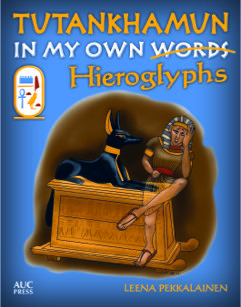 |
|
Tutankhamun: In My Own Hieroglyphs tells the story, for older children, of the life and afterlife of the famous young pharaoh in his own words. Tutankhamun tells us about the trouble he got into as a child in Akhenaten's palace in the new city of Akhetaten, and how he became a boy pharaoh. As we learn, his life changed a lot when he died as a teenager, and long years of boredom started in his tomb with only his pet monkey Fingers and his treasure for company. He did meet some of the Egyptian gods, of course, and had fun scaring off tomb robbers, but it was mostly rather dull. Then one day, some new and strange people, including a Mr. Howard Carter, arrived and began to take all the treasures out of his royal tomb. Fortunately, through the eyes of his beautiful golden mask, Tutankhamun, could have fun again traveling around the world |
Mr Mummific
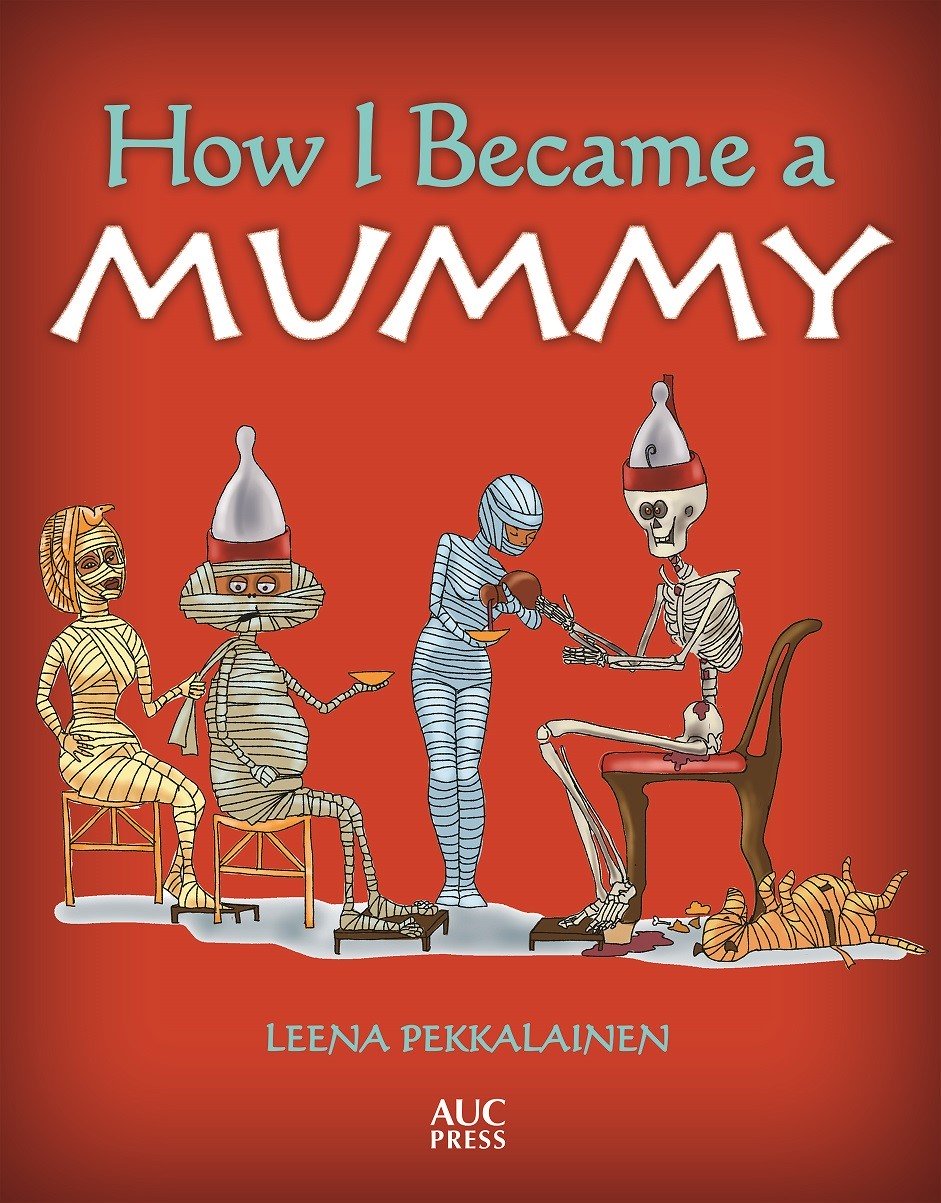
|
An ancient friend of mine, Mr Mummific dictated a book about how he became a mummy - and I was his scribe and artist. The book is available at Amazon.com and Amazon.co.uk On my other website www.ancientagypt101.com he continues his stories about life in ancient Egypt. |
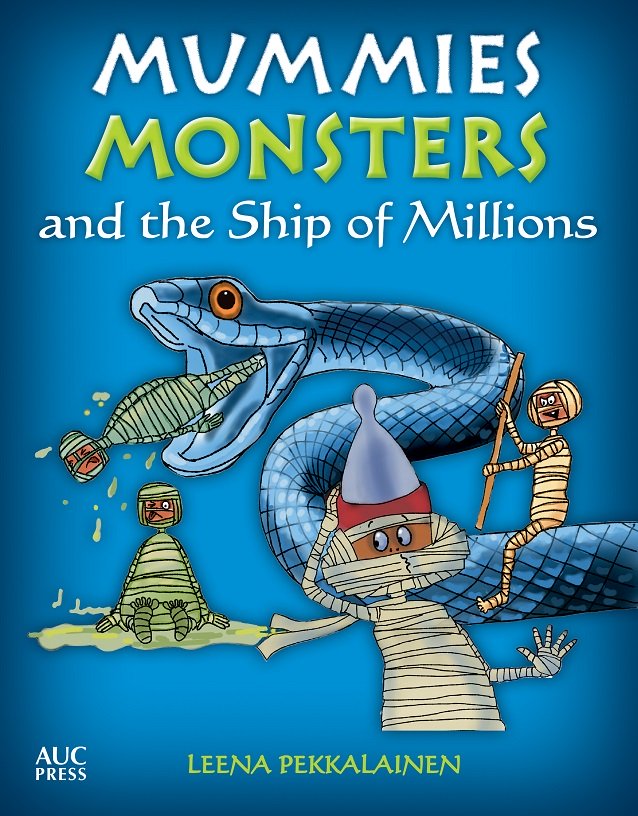
|
Another hilarious adventure for children with Mr Mummific, the mummy with attitude. He now tells the story of his mishaps, misunderstandings and misadventures as he leaves his tomb through the False Door to embark on the complicated and dangerous journey to the Afterlife aboard the magnificent Ship of Millions. Find the book at Amazon.com and Amazon.co.uk |
The Nephilim Quest Series
The first book in an epic fantasy series based on human mythology. The search for the mythical Watchers, the angels who fathered the Nephilim, the half-angels. A story that moves on three levels - our times, ancient Greece and ancient Egypt.
Preview Nephlim Quest 1: Shadowhunter online
***
My Author Website at leenasbooks.com
Do you have experiences and tips
about treating feline inhalant allergies?
Share your story and read
what others have said by
CLICKING HERE
